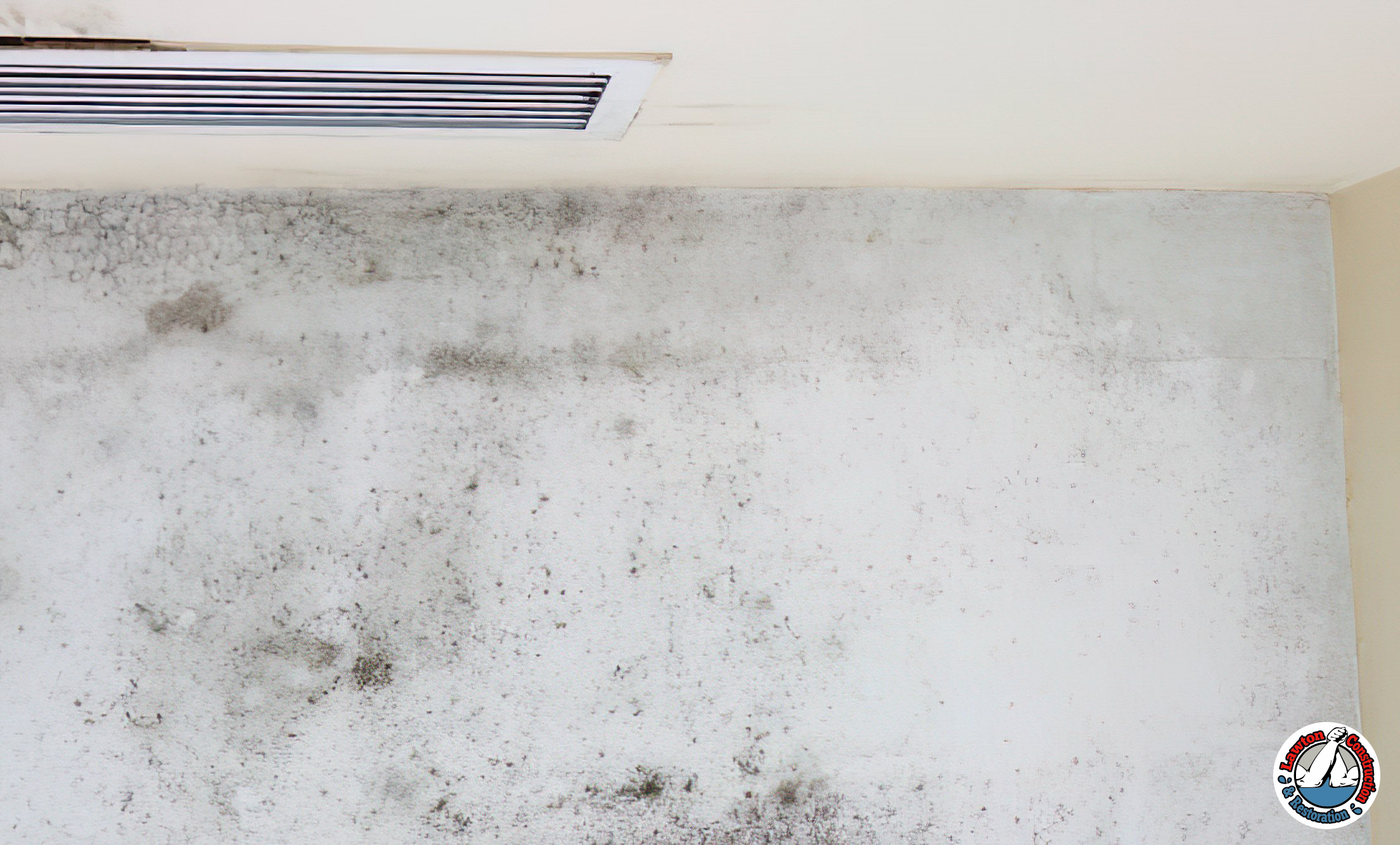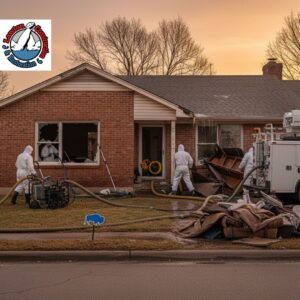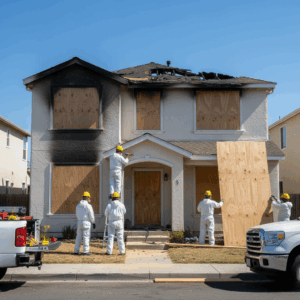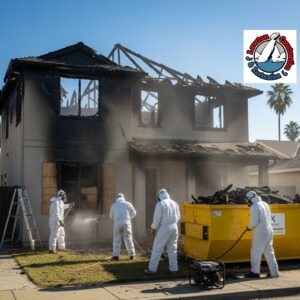Avoid Health Hazards with a Safe Mold Remediation Process
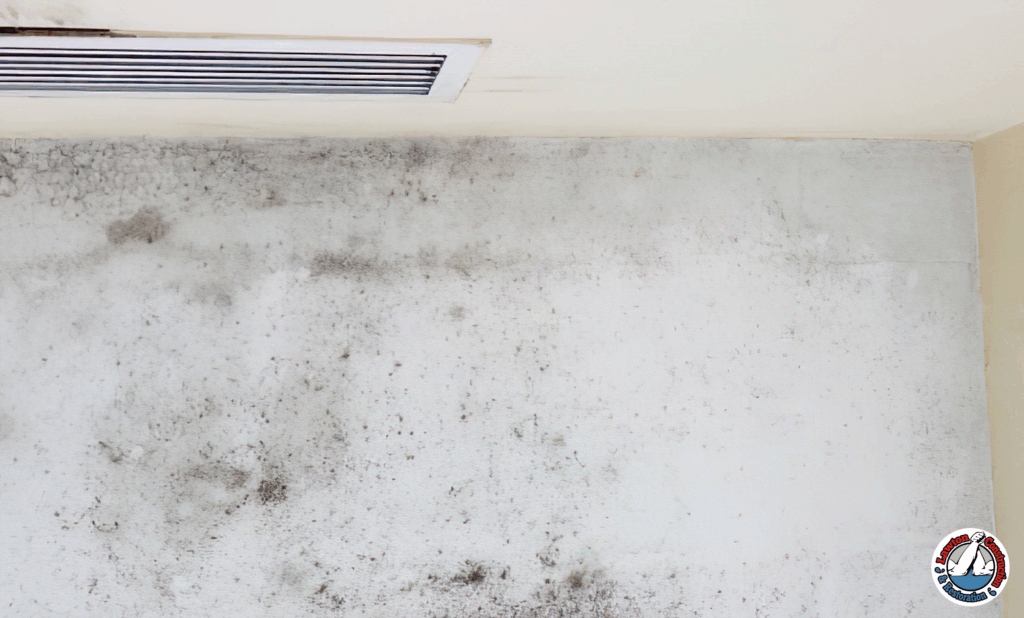
Table of Contents
Introduction
Have you ever walked into a room and noticed a musty smell or spotted dark patches creeping along the walls or ceiling? You might be dealing with more than just an eyesore. Mold isn’t just a nuisance—it can pose serious health hazards if left unchecked. From respiratory issues to allergic reactions, the health risks of mold are real and often underestimated.
Whether you’re a homeowner, property manager, or renter, understanding the importance of safe mold removal is critical. Mold can spread quickly through damp environments, making early detection and a safe mold remediation process essential for protecting both your health and your property. But where do you start, and how do you ensure you’re not making the problem worse?
In this guide, we’ll walk you through how to avoid health hazards with mold remediation, what makes the process safe and effective, and how to prevent mold from making an unwelcome return. If you’re ready to safeguard your space and breathe easier, you’re in the right place.
Understanding the Health Risks of Mold Exposure
Have you ever wondered why mold seems to get such a bad reputation? It’s not just about unsightly stains or a musty odor—it’s about the impact mold can have on your well-being. What you can’t always see is how it silently compromises indoor air quality and, more importantly, your health.
Mold exposure affects people in different ways, and while some may only experience mild irritation, others—especially those with allergies, asthma, or weakened immune systems—may face more serious complications. Recognizing the health risks of mold early can help you take the right steps before it becomes a major problem.
Common Symptoms of Mold Exposure Include:
- Persistent coughing or sneezing
- Nasal congestion and throat irritation
- Skin rashes and eye discomfort
- Worsening asthma or allergy symptoms
If you’ve experienced any of these signs—especially after spending time in a damp or poorly ventilated environment—it’s worth considering whether mold might be the culprit.

Why Mold Exposure Shouldn’t Be Ignored
Even low-level mold exposure over time can lead to chronic health issues. And for children, the elderly, or anyone with pre-existing respiratory conditions, the consequences can be more severe. Mold spores are tiny and airborne, which means they can easily be inhaled without you even noticing. That’s what makes preventing mold health issues so critical.
Mold doesn’t just impact your health—it affects your peace of mind. By understanding the dangers it poses, you’re already taking the first step toward safe mold removal and a healthier home environment.
So, what can you do to protect yourself and your loved ones? The answer lies in recognizing the signs, staying informed, and acting quickly. Let’s explore how to spot mold early in the next section.
Identifying Mold in Your Home or Building
Think mold only appears as black spots in the corner of a shower? Think again. Mold can hide behind walls, under floors, and in ceilings—making it a hidden threat that quietly damages your property and your health. But how do you know if it’s lurking in your space?
Recognizing the early signs of a mold problem is essential to kick-starting mold remediation before it spirals out of control. The good news? You don’t need to be an expert to spot potential trouble.
Visible and Hidden Signs of Mold Growth
You might already be seeing the obvious indicators, such as:
- Discoloration on walls, ceilings, or flooring (often green, black, or white)
- A persistent musty or damp odor, especially in basements or bathrooms
- Peeling paint or wallpaper
- Water stains or warped surfaces
But mold doesn’t always make a grand entrance. In fact, it thrives in places you don’t often inspect—like behind drywall or under carpets—especially after water damage or leaks.
High-Risk Areas Where Mold Tends to Grow
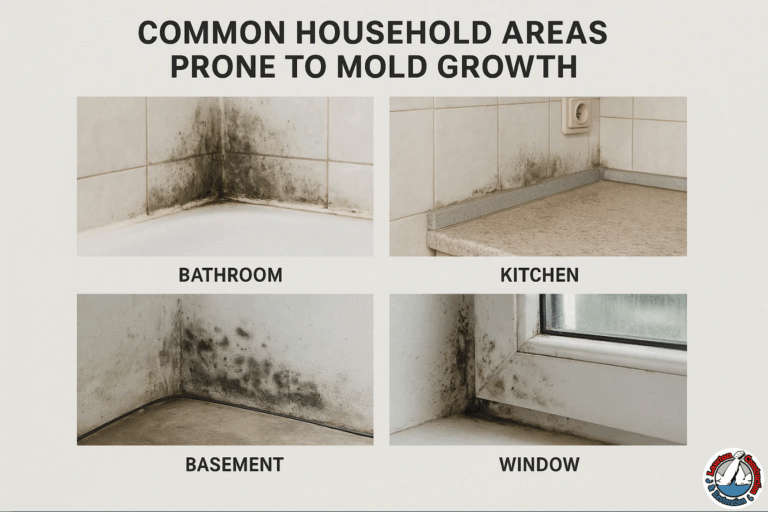
Mold needs three things to thrive: moisture, warmth, and organic material. Common hot spots include:
- Bathrooms and kitchens – due to high humidity and frequent water use
- Basements and crawl spaces – often dark and poorly ventilated
- Attics – especially if the roof has leaks or lacks proper insulation
- HVAC systems – mold can grow inside ductwork and spread through the air
If you notice any of these conditions in your home, it might be time to investigate further.
Should You Test for Mold?
While some signs are easy to recognize, others require professional insight. If you suspect mold but can’t find it, or if anyone in your household is experiencing unexplained health issues, consider scheduling a professional mold inspection. Experts can confirm its presence and assess the extent of the damage—ensuring a safe mold remediation process moving forward.
Being proactive in identifying mold not only protects your property but also supports your health. In the next section, we’ll dive into the step-by-step process of removing mold safely and effectively.
Steps for a Safe Mold Remediation Process
So, you’ve discovered mold in your home—what now? The idea of tackling it can feel overwhelming, but taking the right approach is key to protecting both your property and your health. A structured, cautious, and well-informed plan isn’t just smart—it’s necessary. After all, the goal isn’t just removal; it’s safe mold remediation that truly resolves the issue without putting you or others at risk.
Why Mold Remediation Safety Matters
Before jumping into action, it’s important to recognize that not all removal methods are safe or effective. Disturbing mold without proper precautions can release thousands of spores into the air, increasing health hazards and potentially spreading the problem to other areas.
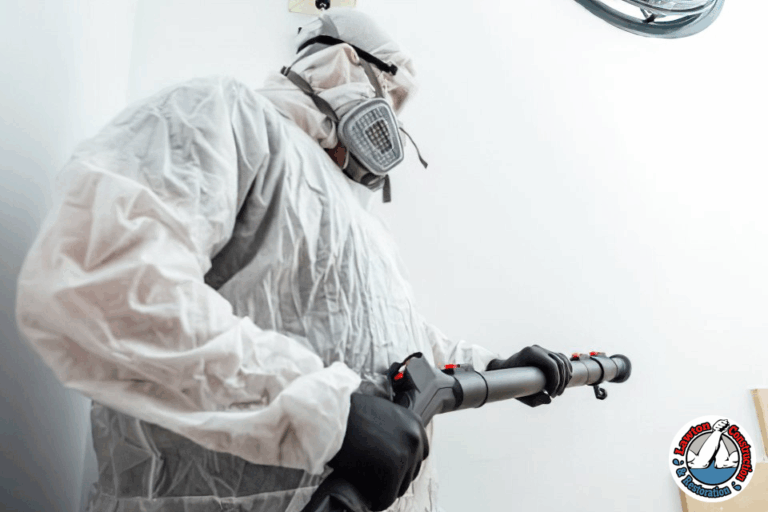
Let’s walk through the right way to handle mold—safely and efficiently.
Step-by-Step Guide to Safe Mold Removal
- Isolate the Contaminated Area
- Seal off the space with plastic sheeting
- Shut down HVAC systems to avoid cross-contamination
- Seal off the space with plastic sheeting
- Wear Proper Protective Gear
- N95 respirators or higher-grade masks
- Gloves, goggles, and disposable coveralls
- This helps prevent inhalation or skin contact with harmful spores
- N95 respirators or higher-grade masks
- Remove Affected Materials Carefully
- Discard porous items like drywall, insulation, or carpet if contaminated
- Double-bag all materials in heavy-duty trash bags for disposal
- Discard porous items like drywall, insulation, or carpet if contaminated
- Clean and Disinfect Thoroughly
- Use EPA-registered cleaning agents
- Scrub hard surfaces and allow proper drying time
- Never mix bleach with ammonia—this can create toxic fumes
- Use EPA-registered cleaning agents
- Dry the Area Completely
- Mold thrives in moisture, so dehumidify the space
- Use fans and increase ventilation where possible
- Mold thrives in moisture, so dehumidify the space
When to Call in the Professionals
If the mold covers a large area (more than 10 square feet), or if you’re unsure about your ability to remove it safely, it’s time to bring in experts. Licensed professionals follow strict mold remediation safety protocols that protect everyone involved and ensure the problem is fully resolved.
By following these steps, you’re not just removing visible mold—you’re creating a safer, healthier environment. Up next, we’ll look at how to find the right remediation professionals to get the job done right.
Choosing the Right Mold Remediation Professionals
Let’s face it—when mold strikes, it’s tempting to grab a mask and some bleach and try to handle it yourself. But not all mold problems are DIY-friendly. In fact, choosing the wrong approach can lead to more damage and even greater health hazards. That’s why partnering with qualified professionals for mold remediation isn’t just a smart move—it’s a necessary one for long-term protection.
So how do you know if you’re hiring the right team? Let’s break it down.
What to Look for in a Mold Remediation Specialist
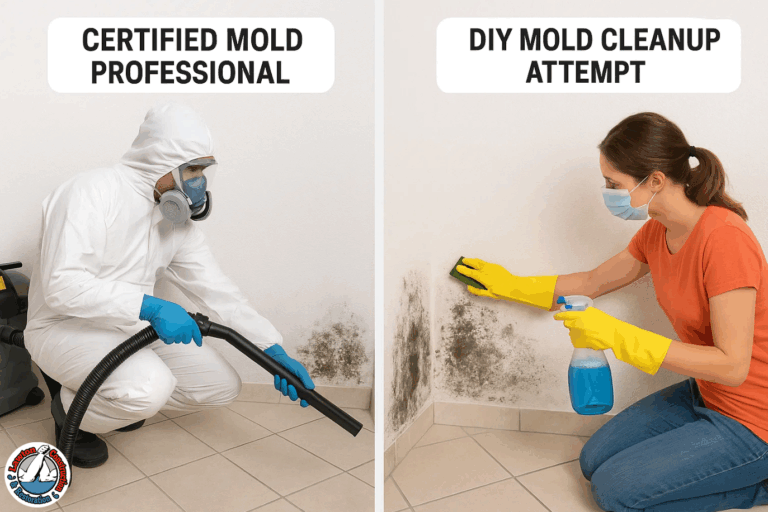
When evaluating mold remediation services, don’t just go with the first name you find online. Here’s what matters most:
- Certifications and Licensing
- Look for credentials like IICRC (Institute of Inspection Cleaning and Restoration Certification)
- Verify state and local licensing requirements
- Look for credentials like IICRC (Institute of Inspection Cleaning and Restoration Certification)
- Experience and Reputation
- Ask how many mold remediation projects they’ve completed
- Check online reviews and request references
- Ask how many mold remediation projects they’ve completed
- Clear, Transparent Process
- Professionals should explain their plan from inspection to cleanup
- Ensure they follow proper containment, disposal, and air filtration protocols
- Professionals should explain their plan from inspection to cleanup
- Use of Safe and Effective Methods
- Ask if they follow industry best practices for safe mold removal
- Avoid those who rely on fogging or unproven quick fixes
- Ask if they follow industry best practices for safe mold removal
- Certifications and Licensing
Key Questions to Ask Before Hiring
- How do you ensure the mold doesn’t spread during cleanup?
- What type of protective equipment do your technicians use?
- Will you help identify and fix the source of moisture?
- Can you provide a detailed estimate and remediation plan?
Asking the right questions gives you insight into their professionalism and dedication to avoiding health hazards with mold remediation.
Why It’s Worth the Investment
Hiring certified professionals might cost more upfront, but it’s worth every dollar. You’ll have peace of mind knowing the job was done thoroughly and safely, helping you avoid future issues and costly repairs. Plus, proper remediation reduces your risk of preventing mold health issues down the line.
In the next section, we’ll explore how to keep mold from coming back—and how you can maintain a healthier, mold-resistant home.
Preventing Mold from Returning
You’ve tackled the mold problem—great job! But the real win? Making sure it doesn’t come back. Mold is persistent, and without the right precautions, it can easily resurface, bringing those same health hazards and property risks with it. The key to lasting peace of mind lies in consistent mold prevention strategies that address both moisture and maintenance.
So, what can you do to stop mold before it starts?
Fix Moisture Issues at the Source
Mold can’t grow without moisture. That makes water control your first and most powerful defense.
- Repair leaky pipes, roofs, and windows promptly
- Address basement or foundation cracks that allow seepage
- Ensure your gutters direct water away from the home’s foundation
Don’t wait for water stains or pooling to take action—prevention is always easier (and cheaper) than remediation.
Improve Ventilation and Airflow
Good airflow helps keep humidity in check, especially in high-risk areas like bathrooms, kitchens, and laundry rooms.
- Use exhaust fans when cooking or showering
- Open windows regularly to promote air circulation
- Install a dehumidifier in damp spaces, especially basements or crawl spaces
Maintaining a relative indoor humidity of 30–50% is ideal for discouraging mold growth.
Schedule Regular Inspections and Maintenance
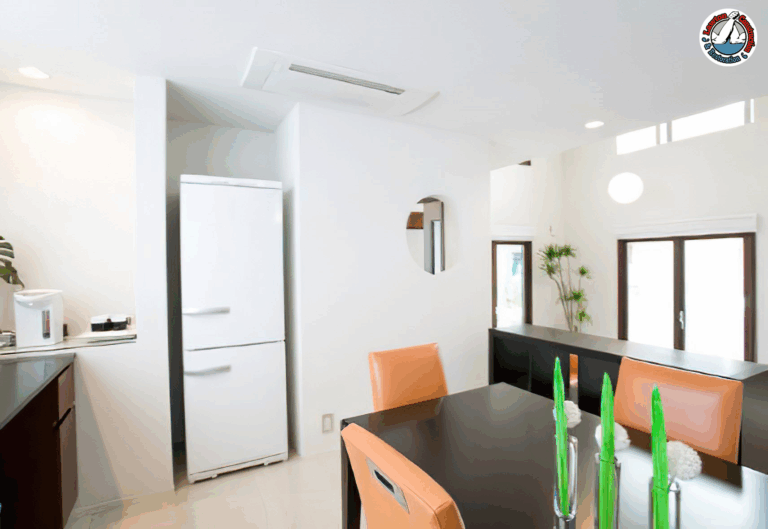
Out of sight shouldn’t mean out of mind. Make mold prevention part of your routine home care.
- Check hidden areas like behind appliances or under sinks
- Inspect attics and basements after heavy rainfall or snowmelt
- Look for early signs like musty odors or discoloration
Catching potential problems early gives you time to act before mold has a chance to spread.
Upgrade to Mold-Resistant Materials
If you’re renovating or building, consider materials designed to stand up to moisture and mold.
- Mold-resistant drywall and paint
- Waterproof flooring in bathrooms and kitchens
- Insulated windows and vapor barriers in basements
These upgrades add value to your home and reduce the chances of facing another mold issue down the line.
Keep the Momentum Going
Remember, preventing mold health issues is an ongoing effort. But with the right steps in place, you can keep your home dry, healthy, and mold-free for the long haul. Prevention is more than maintenance—it’s protection for your property and your family’s well-being.
Ready to wrap things up? In conclusion, we’ll review what you’ve learned and the empowering steps you can take to stay ahead of the mold for good.
Conclusion: Take Control with Safe, Smart Mold Remediation
By now, you understand just how serious mold can be—not just as a nuisance, but as a threat to your health, your home, and your peace of mind. The good news? You’re not powerless. With the right approach, you can avoid health hazards with mold remediation that’s both safe and effective.

So ask yourself: Are you doing everything you can to protect your space and the people in it? Whether you’re already dealing with visible mold or you’re just being proactive, each step you take—from identifying early warning signs to choosing qualified professionals—adds up to a healthier living environment.
Remember, mold remediation safety isn’t just about removing the problem. It’s about protecting your future. With consistent mold prevention practices, a watchful eye, and a commitment to clean air and dry spaces, you can stay ahead of the issue before it takes root again.
Your home should be a haven—not a hazard. By investing time and care into the right mold remediation process, you’re not just eliminating spores—you’re creating a safer, healthier place to live. And that’s a win worth working for.
If you’re ready to take the next step, don’t wait. Consult a professional today, and breathe easier knowing you’re doing what’s best for your health—and your home.
